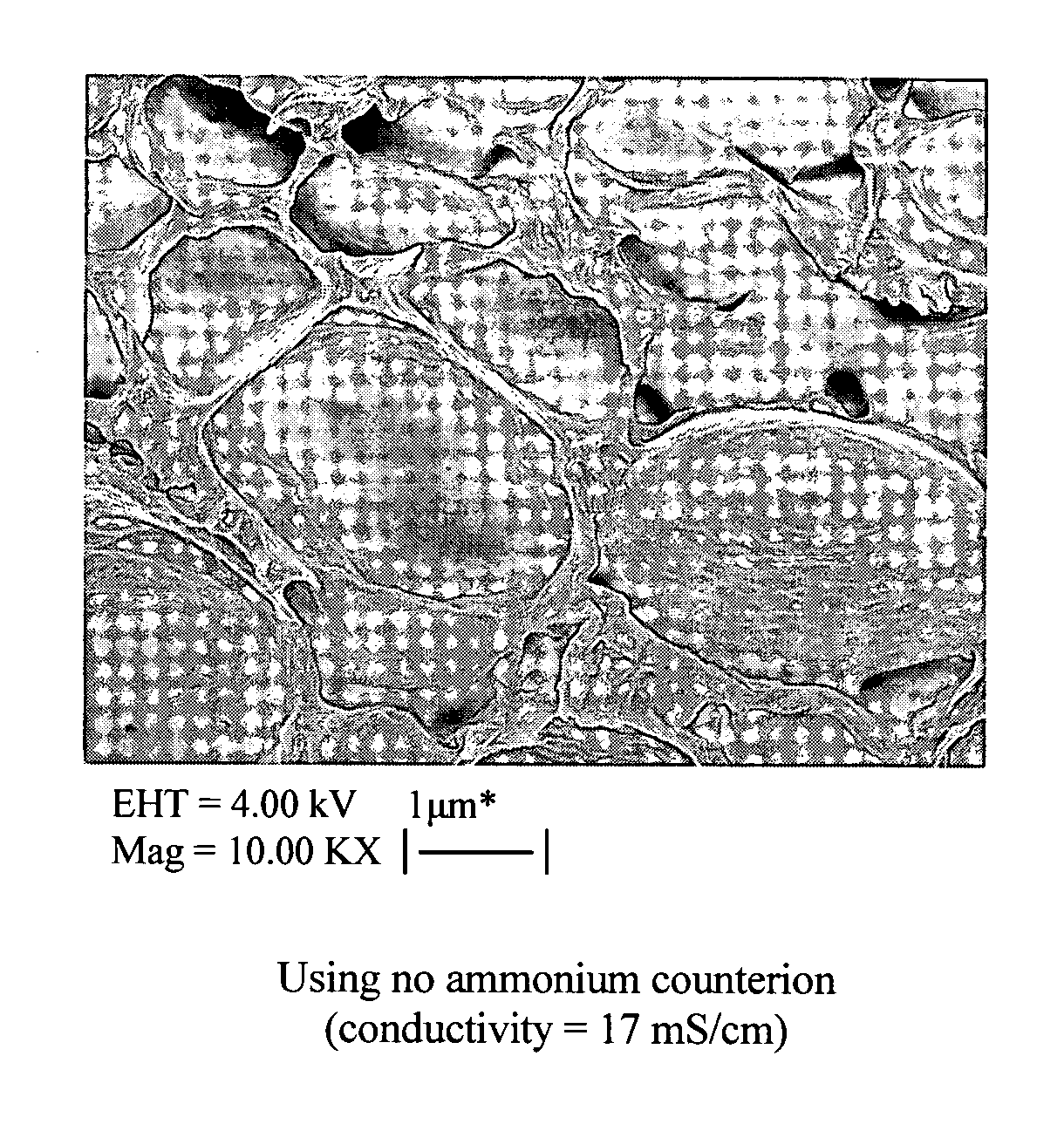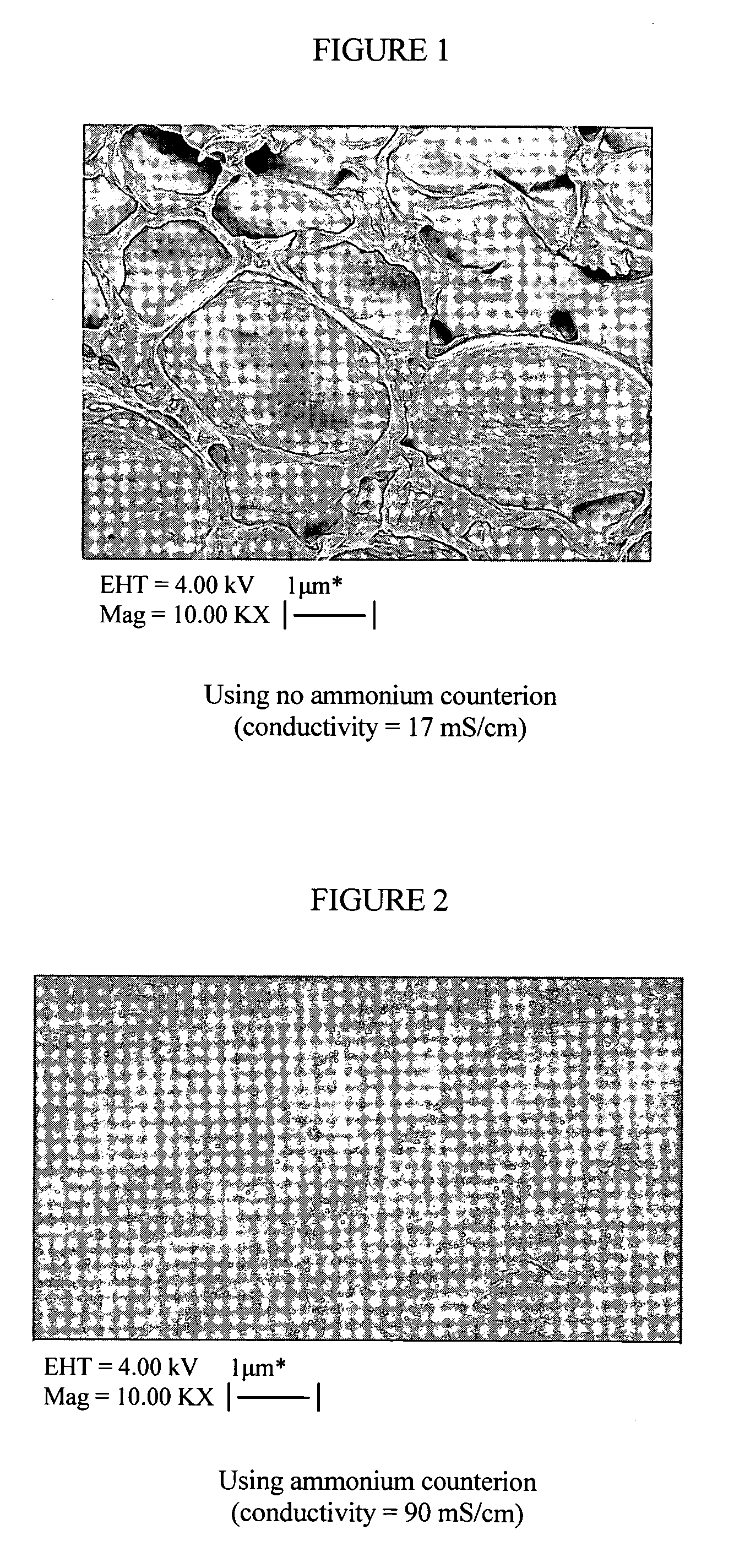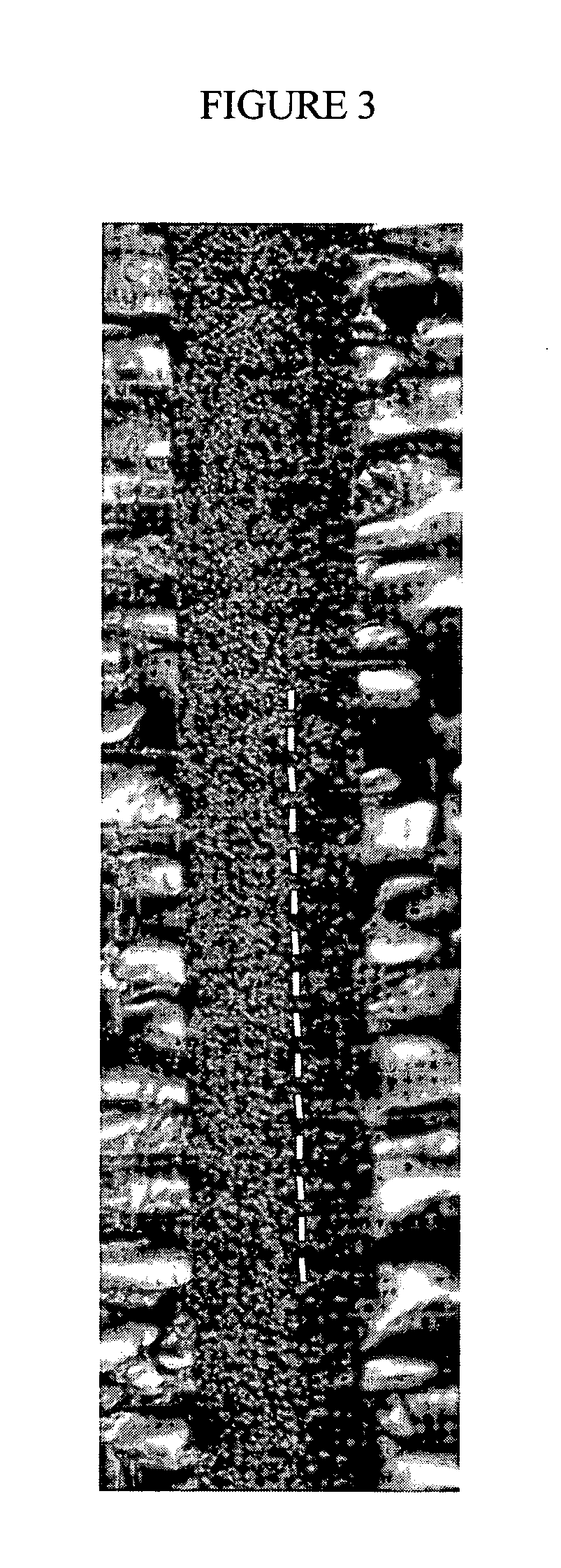Multi-layer polyelectrolyte membrane
a polyelectrolyte membrane and polyelectrolyte technology, applied in the direction of conductors, non-aqueous electrolyte cells, electrochemical generators, etc., can solve the problems of hydration-dehydration cycles, membranes are often subject to high differential pressure, and the technology is developed further. , to achieve the effect of reducing the size of the domain, facilitating distribution along the polymer chain, and good conductivity
- Summary
- Abstract
- Description
- Claims
- Application Information
AI Technical Summary
Benefits of technology
Problems solved by technology
Method used
Image
Examples
example 1
[0136] An ionomer solution in NMP (25% by weight) of SEM / HEMAMMA / Styrene (10.8 g) (EW=278), 2.75 g of a 55% water solution of TBAOH (available from Sachem) and 40.31 g of NMP were added with mixing to a reactor vessel equipped with appropriate inlets and equipment. To 20.16 g of this solution, 2.36 g of Kynar 2801 (ATOFINA Chemicals) powder were added while stirring at 60° C. until dissolution. Once a homogeneous solution was obtained, 0.52 g of Desmodur BL3175A isocyanate cross-linker (Bayer) and 0.02 g of DBTDL catalyst are added with mixing. The solution was poured on a glass plate, spread with a doctor knife and baked for 7 minutes at 177° C. The film membrane was protonated by treatments with one molar hydrochloric (HCl) and sulfuric (H2SO4) acids for 2 hours each at 65° C., then rinsed with deionized water. The proton conductivity of the membrane, measured by AC impedance, was 30 mS / cm and the areal resistance at 25° C. is 0.15 Ω / cm2.
examples 2-7
[0137] Same preparation procedure as Example 1 above. Amounts of reactants and testing results presented in Tables 3, 4 and 5.
example 8
[0138] A NMP solution of polyelectrolyte in TBA form was prepared as follows: to 6428 g of a 25 wt % solution of polyelectrolyte in NMP, 2204 g TBAOH (55% in water) were added and the water removed. Then 4445 g NMP were added. To 6051 g of this solution were added 1878 g Kynar 2801 and 7149 g of NMP and stirred until dissolution. To 41.05 g of the polyelectrolyte / Kynar solution in NMP described above, 0.39 g of Desmodur N3300 isocyanate cross-linker (Bayer) were added with mixing. The solution was poured on a glass plate, spread with a doctor knife and baked for 7 minutes at 177° C. The membrane was protonated by treatments with one molar hydrochloric (HCl) and sulfuric (H2SO4) acids for 2 hours each at 65° C., then rinsed with deionized water. The proton conductivity of the membrane, measured by AC impedance, was 60 mS / cm and the areal resistance at 25° C. is 0.06 Ω / cm2.
PUM
| Property | Measurement | Unit |
|---|---|---|
| domain sizes | aaaaa | aaaaa |
| conductivity | aaaaa | aaaaa |
| conductivity | aaaaa | aaaaa |
Abstract
Description
Claims
Application Information
 Login to View More
Login to View More - R&D
- Intellectual Property
- Life Sciences
- Materials
- Tech Scout
- Unparalleled Data Quality
- Higher Quality Content
- 60% Fewer Hallucinations
Browse by: Latest US Patents, China's latest patents, Technical Efficacy Thesaurus, Application Domain, Technology Topic, Popular Technical Reports.
© 2025 PatSnap. All rights reserved.Legal|Privacy policy|Modern Slavery Act Transparency Statement|Sitemap|About US| Contact US: help@patsnap.com



